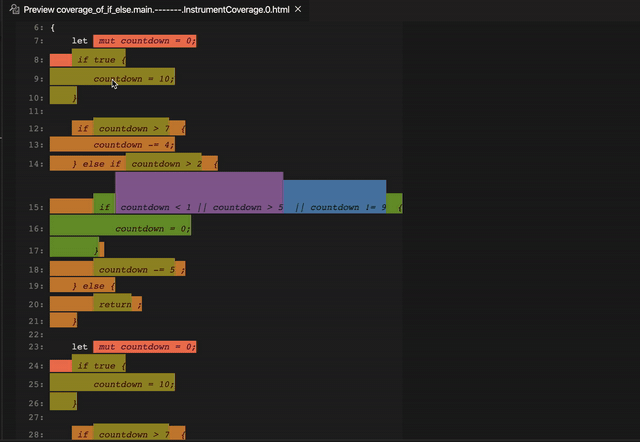Tools, tests, and experimenting with MIR-derived coverage counters Leverages the new mir_dump output file in HTML+CSS (from #76074) to visualize coverage code regions and the MIR features that they came from (including overlapping spans). See example below. The `run-make-fulldeps/instrument-coverage` test has been refactored to maximize test coverage and reduce code duplication. The new tests support testing with and without `-Clink-dead-code`, so Rust coverage can be tested on MSVC (which, currently, only works with `link-dead-code` _disabled_). New tests validate coverage region generation and coverage reports with multiple counters per function. Starting with a simple `if-else` branch tests, coverage tests for each additional syntax type can be added by simply dropping in a new Rust sample program. Includes a basic, MIR-block-based implementation of coverage injection, available via `-Zexperimental-coverage`. This implementation has known flaws and omissions, but is simple enough to validate the new tools and tests. The existing `-Zinstrument-coverage` option currently enables function-level coverage only, which at least appears to generate accurate coverage reports at that level. Experimental coverage is not accurate at this time. When branch coverage works as intended, the `-Zexperimental-coverage` option should be removed. This PR replaces the bulk of PR #75828, with the remaining parts of that PR distributed among other separate and indentpent PRs. This PR depends on two of those other PRs: #76002, #76003 and #76074 Rust compiler MCP rust-lang/compiler-team#278 Relevant issue: #34701 - Implement support for LLVMs code coverage instrumentation  r? @tmandry FYI: @wesleywiser
For more information about how rustc works, see the rustc dev guide.